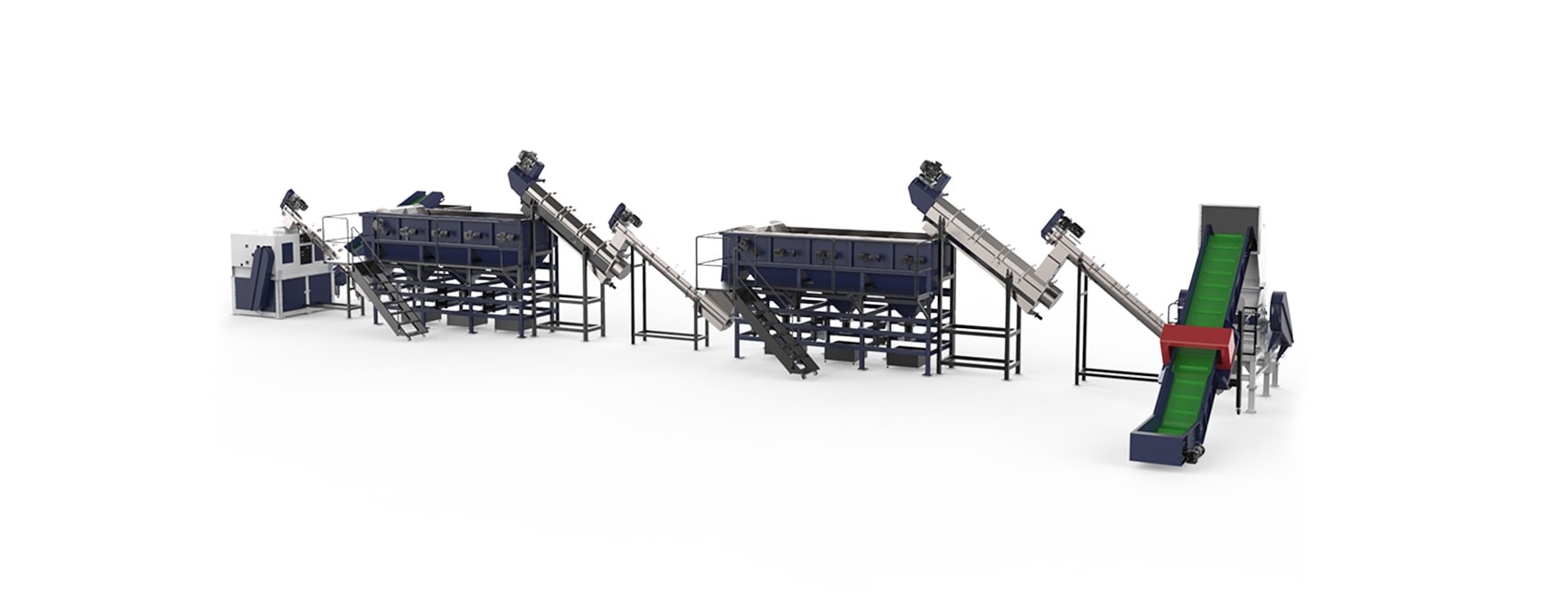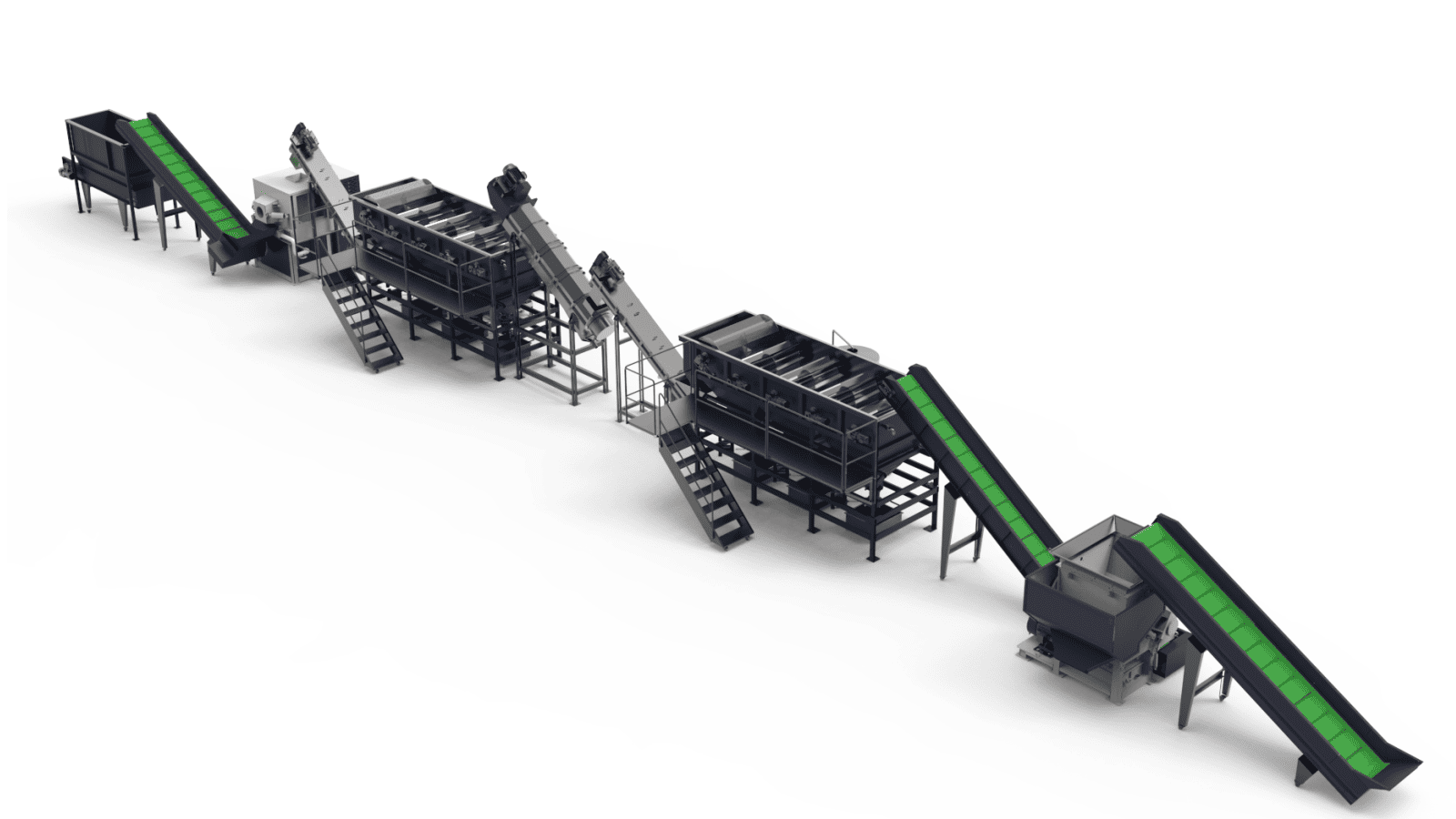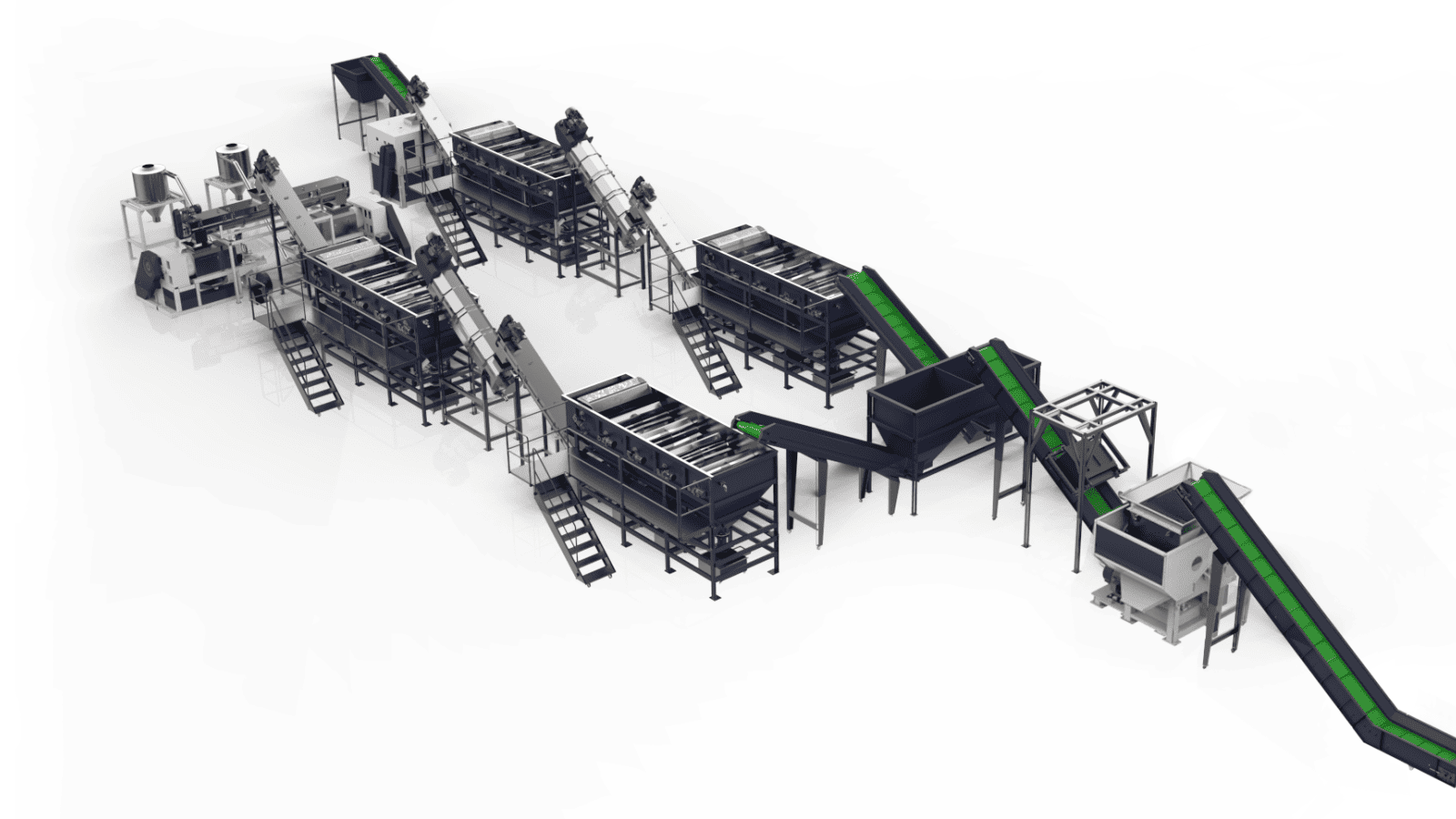JIANGSU KITECH MACHINERY CO.,LTD
In an era where global plastic recycling demand is projected to hit 580 million tons by 2030 (Plastics Europe, 2025), manufacturers face dual pressures: soaring operational costs and tightening ESG regulations. Yet, a game-changing innovation is rewriting the rules—intelligent PE film washing systems. Take GreenCycle Corp, a mid-sized recycler in Texas: after upgrading to an AI-driven system, they slashed annual operating costs by $523,000 while boosting output purity to 99.1%, unlocking premium pricing in medical-grade recycled pellets.
What makes these systems the ROI-boosting asset for modern factories? Behind the 40% energy savings (via smart thermal control) and 67% fewer downtime hours (through IoT predictive maintenance) lies a technological trifecta: ultrasonic nano-cleaning, closed-loop water recovery, and blockchain-grade material tracing. For plant managers battling 22% annual waste handling cost hikes, this isn’t just an equipment upgrade—it’s a $500K/yr lifeline hidden in plain sight.

Data-Driven Insights:
| Cost Component | Traditional System | Intelligent System | Annual Savings |
| Water Consumption | 8 tons/ton | 2.3 tons/ton | 160,000 tons/year |
| Energy Consumption | 100 kWh/ton | 80 kWh/ton | 450,000 kWh/year |
| Downtime Cost | $50,000/incident | 40% reduction in downtime | $300,000/year |
| Cleaning Agent Usage | 100 L/ton | 70 L/ton (30% reduction) | $180,000/year |
Technical Implementation:
Water Recycling Module:
·Integrates closed-loop systems with ultrafiltration membranes (50-60 nm pore size) to recover 90% of water
·Case Study: A 10-ton/day plant reduces water bills by 1.2Mover5years(assuming0.5/ton water cost)
Energy-Efficient Pumps:
·Uses frequency conversion motors to optimize pump speed, matching flow rates to real-time demand
·Energy savings validated by a Chinese manufacturer achieving 25% higher OEE Overall Equipment Effectiveness
Predictive Maintenance IoT:
·Deployed 100+ sensors monitoring temperature, pressure, and vibration
·Prevents unplanned shutdowns through AI-driven anomaly detection (e.g., identifies 85% of bearing failures 72 hours in advance)
AI-Powered Chemical Blending:
·Optimizes detergent concentration with machine learning algorithms trained on 10,000+ cleaning cycles
·Enables shift to biodegradable surfactants (e.g., enzyme-based formulations) reducing disposal costs by 22%
Strategic ROI Calculation:
| Investment | Cost | Payback Period |
| Basic System (50 tons/day) | $2.3M | 18 months |
| Advanced System (100 tons/day) | $3.8M | 24 months |

By 50kHz high-frequency ultrasonic vibration and 60°C hot water washing, the cleaning effect is significantly improved. Latest technology can remove 99.5% ink, and aging technology can remove 85% in high purity of film.
| Cleaning Method | Ink Removal Rate |
| Traditional Process | 85% |
| Ultrasonic-Assisted System | 99.5% |
For minimized breakage during cleaning, the system features ceramic-coated rolls and close-loop tension control that maintains even very thin film integrity. The outcome is a breakage of less than 0.15% for a 0.1mm film thickness, which is better compared to other systems.
The implementation of an MES is delivering real-time visibility and optimization. With real-time monitoring of performance, factories are capable of 95% Overall Equipment Effectiveness (OEE), maximum productivity, and reduced downtime.
In order to reduce the environmental impact, the technology substitutes traditional sodium hydroxide (NaOH) cleaners with enzymatic chemistry-based, bio-degradable chemicals. The technology reduces wastewater COD from 5000mg/L to 800mg/L, which is economically feasible and environmentally friendly to treat wastewater.
| Cleaning Agent | Wastewater COD (mg/L) |
| Sodium Hydroxide | 5000 |
| Enzyme-Based | 800 |
The technology utilizes static adsorption technology which makes 90% of the ink recyclable and reduce waste ink and production cost. The technology also saves the manufacturers 40% of the cost of regenerated ink, thereby transforming waste into a value-added product.
Equipment must be chosen in a way that the capacity of the equipment will be appropriately matched with the production line. The processing required must be calculated by the formula below:
Processing Capacity (kg/h) = Line Speed (m/min) × Film Width (m) × Thickness (mm) × Density × 0.85
This formula takes into account material efficiency and density ratings as a way of enabling manufacturers to select the correctly sized system for their company.

To reduce energy consumption to ±3%, use energy consumption deviation-detecting equipment certified as ISO 50001 compliant. Certification causes no performance effect but achieves long-term electrical cost saving.
A mature system would then be from a market-leading industry supplier with mature technology. The three giant world manufacturers, e.g., EREMA (Austria) and B+B (Germany), have over 200 patents in the area of PE film recycling, which is one of the proofs of high technology maturity.
Apart from start-up investments, consider long-term costs of operation. Modular system architectures reduce the cost of equipment adaptation by 60% and allow phased intelligent upgrading. Such flexibility allows factories to add automation in phases without having to make huge start-up investments.
| Selection Factor | Best Practice | Key Benefit |
| Processing Capacity | Use formula for precise equipment sizing | Ensures production line compatibility |
| Energy Efficiency | ISO 50001-certified equipment | ±3% energy deviation, cost savings |
| Supplier Reputation | Choose manufacturers with 200+ patents | Proven technology, reliable support |
| Upgrade Flexibility | Modular design for phased smart upgrades | 60% lower modification costs |
Advanced cleaning technology enhances the quality of recyclates significantly. LDPE film pellets are being sold at its price raised from ¥6,500/ton to ¥8,000/ton (up to March 2025) after cleaning them appropriately, thereby making recycling processes profitable.
| Material | Market Price (¥/ton) | After Smart Washing System |
| Recycled LDPE Pellets | ¥6500 | ¥8,000 |
The coating process is applied to coat high-performance lithium battery separators washed PE films. The process is more than 180°C heat-resistant and an improved substitute for traditional high-performance films.

It has a washing-modification production line for the conversion of PE film into medical-grade adhesive tapes. It is breathable at 8,000 g/m²/24h, thus comfortable and effective to use in medicine.
| Application | Key Performance Improvement |
| Lithium Battery Separators | Heat resistance increased to 180°C |
| Medical PE Adhesive Tapes | Breathability reaches 8,000 g/m²/24h |
The waste water recycling plant recycles 92%, dramatically reducing the water usage. The sludge pyrolysis technology also converts the leftover waste into fuel, substituting 20% of the natural gas usage, again reducing the operation cost and carbon footprint.
| Sustainability Feature | Impact |
| Wastewater Recycling | 92% reuse rate, lower water expenses |
| Sludge Pyrolysis Fuel | Replaces 20% of natural gas usage |
Application of digital twin technology provides virtual modeling of the equipment in real time to reduce operation risk to a minimum. The model error rate has fallen below 1.5% with high-end algorithms and fault predictability accuracy is 91%, radically improving maintenance efficiency.
| Technology | Error Rate | Fault Prediction Accuracy |
| Digital Twin System | <1.5% | 91% |
In order to be viable, off-grid 100% daytime solar-powered PE film washing systems are finding their way into the Southeast Asian market with barely any use of fossil fuels and expense.
Nanotechnology is transforming the effectiveness of film cleaning. Nano SiO₂ coating increases the contact angle to over 160°, lowering the cleaning difficulty by 50%. Recycling is cheaper and saves chemicals and water.
| Innovation | Key Improvement |
| Nano SiO₂ Coating | Contact angle >160°, easier cleaning |
| Cleaning Efficiency | 50% reduction in difficulty |
The bio-based PE film market is growing very rapidly. Growth in the market will possess a larger market share of 8% in 2025 to more than 25% in 2030 based on policy regulation and demand for sustainable packaging solutions.
| Year | Bio-Based PE Market Share |
| 2025 | 8% |
| 2030 | 25% |
Blockchain traceability systems are revolutionizing the recycled material market. Robust carbon footprint tracking via smart contracts enhances materials transparency and resale value of recycled PE by 15%.
| Technology | Impact on Recycled PE |
| Blockchain Traceability | 15% increase in resale value |
Purchasing a PE Film Washing System is not only a eco-friendly move—it's a smart move that can save the typical factory up to $500K a year. With material recycling optimized, waste disposal costs saved, and improved efficiency, the system doesn't just make the world a greener place—it brings in money.
As businesses push to be less environmentally impactful and more economical, installing an award-winning PE film wash system may be the cutting edge your factory needs to survive in a competitive climate. No longer a question of if, but when, you'll have to make one. Is your factory ready to reap these advantages and take your operation to new heights?